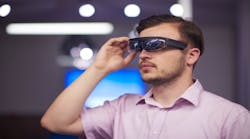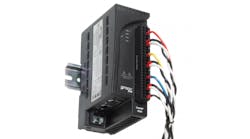Modern workforces empowered with modern tools
By Keith Higgins, Rockwell Automation VP of digital transformation
The costs to source, select and develop a highly skilled workforce are expected to rise over the next few years. Indeed, many organizations report a shortage of qualified applicants for critical technology roles such as technicians and operational managers, which can negatively affect industrial productivity. What’s more, traditional training methods alone are not enough to solve this challenge, especially as the industry anticipates a wave of retirements in the coming decade.
Adapting to this rapidly evolving labor landscape, the industrial sector is embracing augmented reality (AR) and virtual reality (VR) to improve and digitize workforce-training programs, enabling workers to upskill faster and more efficiently. Novice workers can use VR headsets for training in a digital environment, which allows them to familiarize themselves with the production environment and processes in a tangible way. Operators can virtually tour the production suite and see precisely where the equipment will be located, and then walk through the process.
One group that could particularly benefit from these types of enhanced training initiatives are US military veterans. Every year, more than 200,000 veterans leave military service to join the civilian workforce and are looking for opportunities to build on technical skills learned in the service. Using VR-enabled training, an industrial organization can onboard workers that are new to the industry faster, safer, and more efficiently, subsequently reducing the skills shortage in the industry today.
Beyond training new staff, improving operational knowledge of the existing workforce is a critical goal for many industrial organizations. In many situations, technical support via a phone call with a knowledgeable advisor provides on-site technicians with the answers needed to fix a problem. Other times, the issue might be more complex or unfamiliar to the available local worker. AR-enabled equipment uses video-based interactions to connect on-site staff with off-site experts. Using an augmented reality application with a live video feed, a knowledgeable, remote technician can observe situations in real-time and provide specific, detailed instructions to make repairs or even use 3D spatial notations on device touchscreens to highlight which machine components need attention.
One industry where AR training and support can make a critical impact is life sciences. Biotech and pharma companies leverage digital technologies to connect manufacturing systems to better and faster serve those who rely on their products. Considering the COVID-19 pandemic, many life-sciences organizations quickly pivoted from traditional operations to rapid production of PPE products, hand sanitizers, and ventilators (which requires supplemental, efficient training to do so expeditiously).
Management and maintenance of these modernized systems require significant re-training of the existing workforce. As an example, an operator can be asked to perform up to 900 manual connections on a typical single-use bioreactor. The potential for error is significant, given the vast quantity of connections and speed at which they must be completed. Instead, an operator using an AR headset or a tablet simultaneously views connection instructions, which are virtually overlaid on the actual piece of equipment. Rather than correlating manual instructions with visual clues, the operator is shown precisely where a connection must be made. This type of AR-enabled visualization helps mitigate equipment-downtime events and improve overall production efficiency.
In summary, as industrial environments evolve due to technological and social changes, AR/VR-enabled solutions will deliver transformational results to manufacturers. The technology can help novice workers and experienced staff alike train in a digital environment to learn how to handle problems—all with the highest precision.


